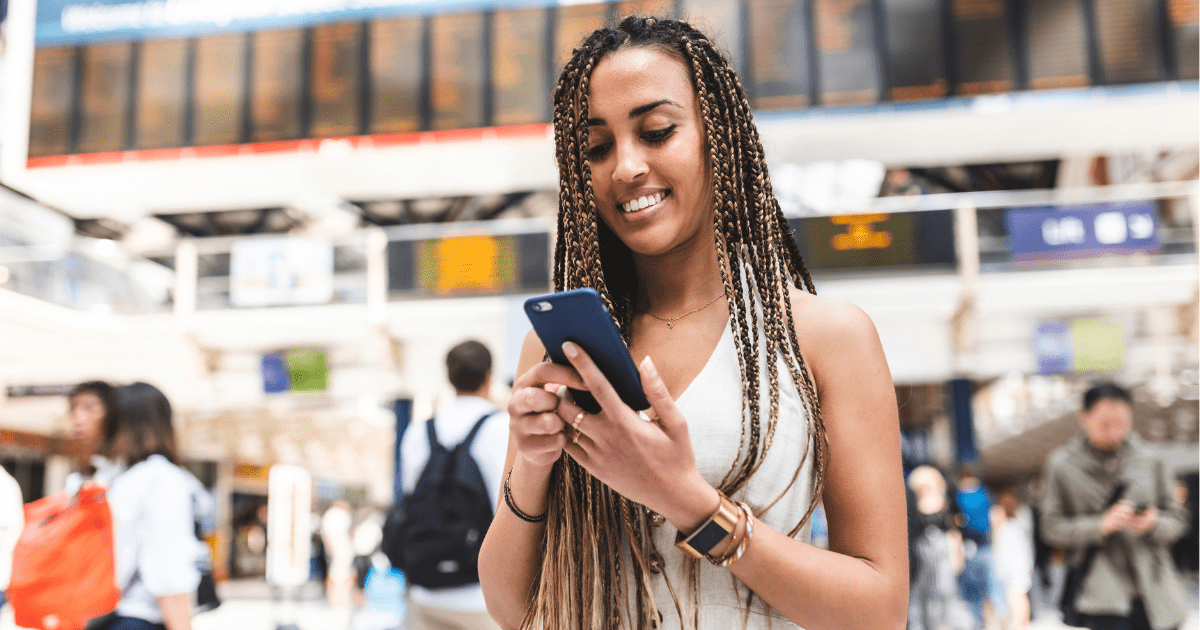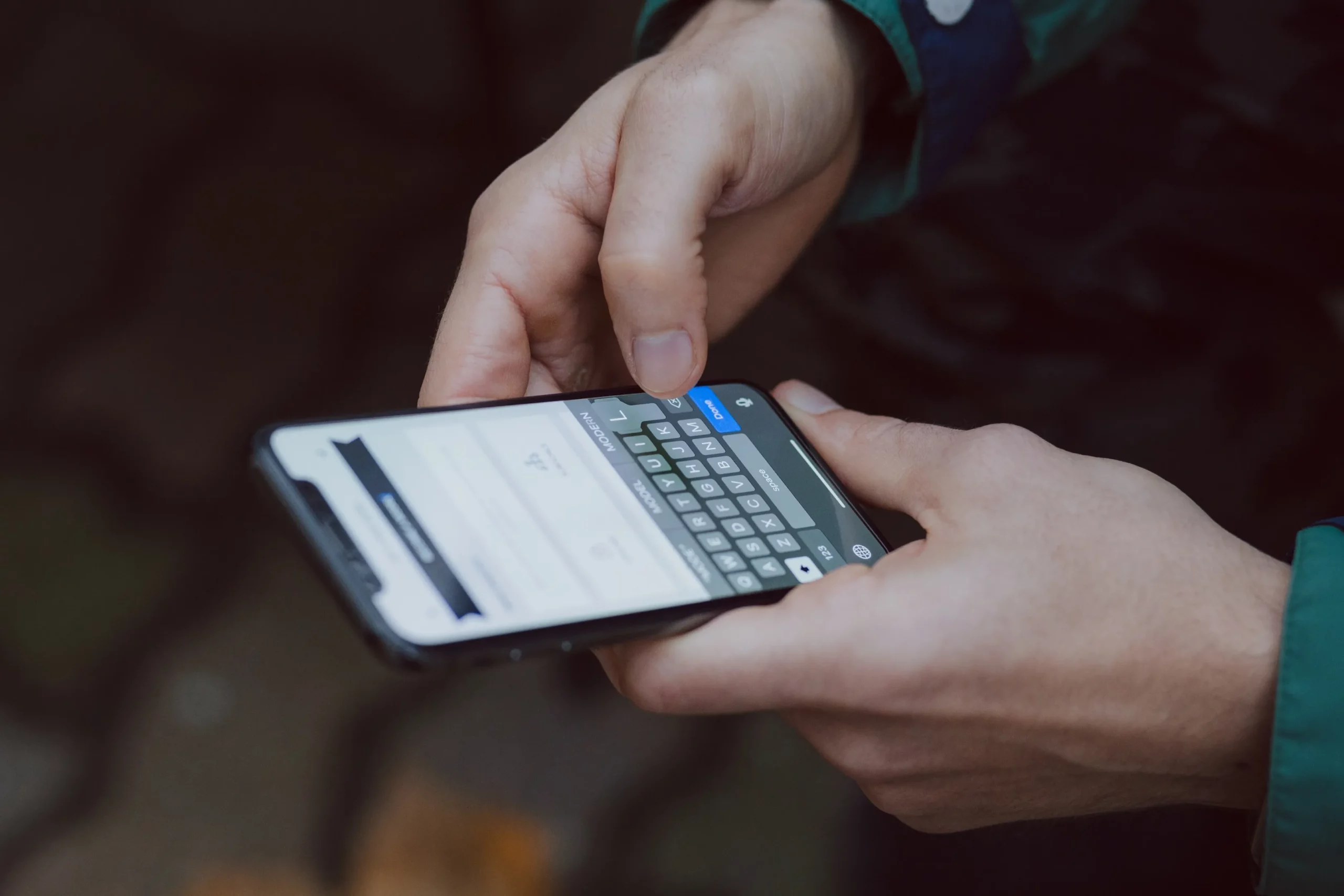
You and your team may find some success with mass texting and outreach, just like businesses do with generic email outreach. But business texting is most effective and impactful because it’s personal.
It allows you to talk to people you wouldn’t otherwise talk to and in a way that’s more personable than any other form of outreach. Because when you treat your leads and customers like people, they engage.
With all the different types of messages you want to send, the personalization looks different too. This post breaks down key elements to include in your messages to keep things human. Finding the right balance of these elements in each situation results in huge boosts to trust, responses, and ultimately sales.
First Message to a New Lead
The five minutes after you get a new lead represent the most important five minutes in that relationship. Well, that might be a little dramatic. But the faster you reach out to leads, the more conversions you get. And you increase conversions even more when you show you’re a real person.
So to ensure you get responses and build new relationships, your first message to a fresh lead should:
– Include their first name in a natural way: Don’t repeat someone’s name multiple times within just a few short sentences. That’s weird.
– Introduce who you are and the business you’re from: This sounds obvious until you think about all the messages you receive that don’t do a good job at this…
– Ask a simple open-ended question: Your goal is to get a response, so give people something to respond to. If you have an idea of what they’re interested in about your company, ask about that specifically.
Cold Lead Outreach
Leads you forgot or who forgot you… No matter how those leads went cold, most businesses have a bunch of them. This is probably the most mysterious type of outreach as you really have no idea how someone is going to react.
To effectively reconnect with a cold lead, your first message should:
– Include their first name in a natural way: Show that you “remember” who they are. (That’s what your CRM is for.) Especially if you know their preferred name — think Mike instead of Michael — make sure you use that.
– Re-introduce who you are: It’s unrealistic to expect someone to remember who you are and why you’re reaching out. You have no idea whether or not they saved your previous in their phone, so play it safe and quickly introduce yourself.
– Talk about what they were previously interested in: Hopefully you have good notes from either a lead form or past conversations that were had. Specifically reference what they previously needed from your business to start a discussion about what they may need now.
Customer Retention Follow-up
These messages help you get to know customers better and build stronger relationships. When checking in with customers, your messages should:
– Reference previous conversation topics, purchases, etc.: Just like you carry on conversations with friends or family by asking what’s going on in their life, do the same with your customers.
– Focus on the customer’s needs: An easy in for any conversation is having them talk about their own experiences. Give them a chance to provide feedback that you can then use to better their future experiences.
– Not push an upgrade or purchase: Show up for them and them alone. If every follow-up is just about spending money, you won’t keep customers around for long.
Appointment Reminder
You always need to send reminders — yes, multiple — when you schedule a meeting. At the very least, send a confirmation, a 24-hour reminder, and a 1-hour reminder.
Your text reminders shouldn’t be generic like automated short code messages tend to be. Depending on how many reminders you plan to send, decide how to best split up this information:
– Date and time of the appointment: It’s simple to include both of these details in every message, just in slightly different words.
– Link to join a video call (if applicable): People work from all over the place these days. Don’t make them dig through their inbox to find the link to your Zoom call. By including these links in texts, JobNimbus increased demo show rates to 90 percent.
– Directions for visiting a physical location (if applicable): This is most important for first-time visitors, but even repeat customers may need reminders regarding things like parking. Make it as easy as and stress-free as possible for someone to visit you.
– Details about the purpose of the meeting: Providing a short agenda helps keep everyone on track. This works best in reminders sent one day prior to your meeting.
Special Offer, Sale, or Promotion
Text marketing isn’t just about coupons and generalized offers. By incorporating marketing promotions into your lead nurturing and customer retention strategies, you improve your relationships. Any message you send with an offer should:
– Be relevant to the specific recipients: Segment your contacts and offers so that each person receives a message with a deal they’ll actually care about. Just like generic, mass email offers perform poorly, so do the same offers sent through texts.
– Stay short and sweet: Long messages with convoluted offers get skimmed over and ignored. If people can’t quickly tell what you’re trying to give them, it’s not worth it.
What else to use in messages to keep the personal touch
Other elements that help you connect with other people but aren’t “necessary” include things like:
– Emojis
– Photos
– Videos
– Links to content (landing pages, blogs, etc.)
All of these depend on the circumstances and what you’re talking about. Emojis aren’t always appropriate; videos don’t automatically add value to what you’re saying. But when used in relevant conversations, they help you provide an even better experience.
The Skipio formula for success
The constant you hopefully see in all of these examples is personalization. The best messages emphasize your humanness. You’re one person talking to another person (even if you automate and schedule messages in groups).
Get your team to initiate more fulfilling conversations like these by using Skipio. Our business texting platform is designed specifically for the back and forth interactions everyone wants to have.



